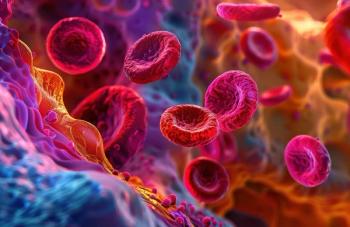
Biologics May Prevent PsA in Patients With Psoriasis
Because biologics are used to treat both conditions, researchers hypothesized they may be helpful to prevent psoriatic arthritis (PsA).
The use of biologics may reduce the development of psoriatic arthritis (PsA) among patients with
Psoriasis commonly precedes PsA, and because biologics are used to treat both conditions, researchers hypothesized they may be helpful to prevent PsA. Previous studies have yielded mixed results on whether the treatment does prevent PsA.
PsA typically develops around 10 years after the onset of psoriasis. However, some individuals can develop PsA first or without ever having or noticing psoriasis. There is no cure for PsA.
To better understand what role biologics might play in preventing the condition, researchers carried out a retrospective cohort study using data from Optum Clinformatics Data Mart from 2007 to 2021. Of the 73.4 million patients included in the data set, 4695 had a new psoriasis diagnosis, had phototherapy as their first treatment, and had no documented history of arthritis.
Investigators then compared outcomes among who was and was not treated with biologics and determined which patients had PsA after 10 years. Patients in the biologic group also underwent phototherapy.
After 461 person-years, there were 213 cases of PsA. However, the incidence for those who received phototherapy only was 50 per 1000 person-years (95% CI, 43.50-57.55), while incidence was measured at 24.55 per 1000 person-years (95% CI, 15.26-39.49) among those who received biologics. Overall, 4234 patients received phototherapy and 462 received biologics.
In total, researchers found an incidence rate difference of –25.48 cases per 1000 person-years (95% CI, –39.09 to –11.87; P = .0011).
Those who underwent phototherapy tended to be slightly older at the time of psoriasis diagnosis than those who took biologics, data showed. Most who underwent phototherapy were women, while just over half of the biologic group were female.
Currently,
Biologics function by blocking reactions in the body that cause psoriasis and its symptoms. The treatments tend to be more effective when taken continuously. Adverse effects can include upper respiratory tract infections, flu-like symptoms, headaches, and injection-site reactions.For those with PsA, biologics can stop pain, stiffness, and swelling in joints, while also preventing the arthritis from worsening.
Three biologics have received FDA approval to treat psoriasis in children: etanercept, estekinumab, and secukinumab.
Reference
Miao KL, Huang MY, Xepoleas M, et al. Do biologics for psoriasis prevent the development of psoriatic arthritis? a population-based study. Presented at: American Academy of Dermatology Annual Meeting; March 17-23, 2023; New Orleans, LA. Accessed April 12, 2023. https://bit.ly/43xozcM
Newsletter
Stay ahead of policy, cost, and value—subscribe to AJMC for expert insights at the intersection of clinical care and health economics.





























































